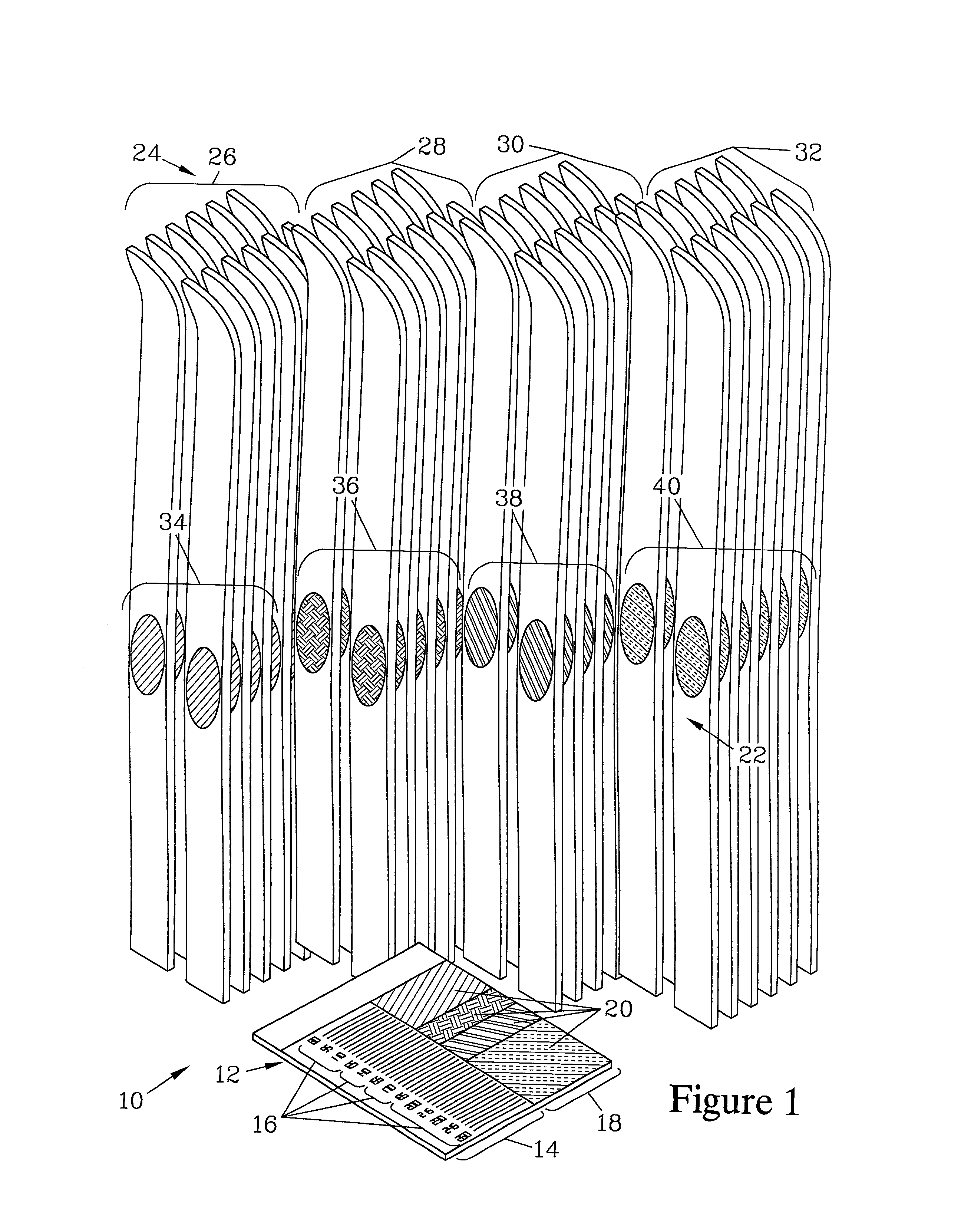System and method for selection of cross-country skis
- Summary
- Abstract
- Description
- Claims
- Application Information
AI Technical Summary
Benefits of technology
Problems solved by technology
Method used
Image
Examples
Embodiment Construction
[0034]FIG. 1 is a schematic view illustrating a ski selection system 10 which forms one embodiment of the present invention. The ski selection system 10 is designed to assist a user, who is a skier or a potential skier, to select a suitable pair of skis. The ski selection system 10 shown in FIG. 1 is a rudimentary embodiment of the present invention which employs a chart 12 which serves as a combined means for accessing the unannounced weight of a user to provide an accessed user weight without disclosing the unannounced weight, as well as means for assigning the accessed user weight into one of a set of predefined weight ranges and providing an encrypted user weight indicator.
[0035]The chart 12 has a predefined weight range display region 14 with a set of marked spatially arranged predefined user weight ranges 16. The user weight ranges 16 marked on the predefined weight range display region 14 allow the user to visually determine the appropriate weight range into which the weight ...
PUM
 Login to View More
Login to View More Abstract
Description
Claims
Application Information
 Login to View More
Login to View More - R&D
- Intellectual Property
- Life Sciences
- Materials
- Tech Scout
- Unparalleled Data Quality
- Higher Quality Content
- 60% Fewer Hallucinations
Browse by: Latest US Patents, China's latest patents, Technical Efficacy Thesaurus, Application Domain, Technology Topic, Popular Technical Reports.
© 2025 PatSnap. All rights reserved.Legal|Privacy policy|Modern Slavery Act Transparency Statement|Sitemap|About US| Contact US: help@patsnap.com



